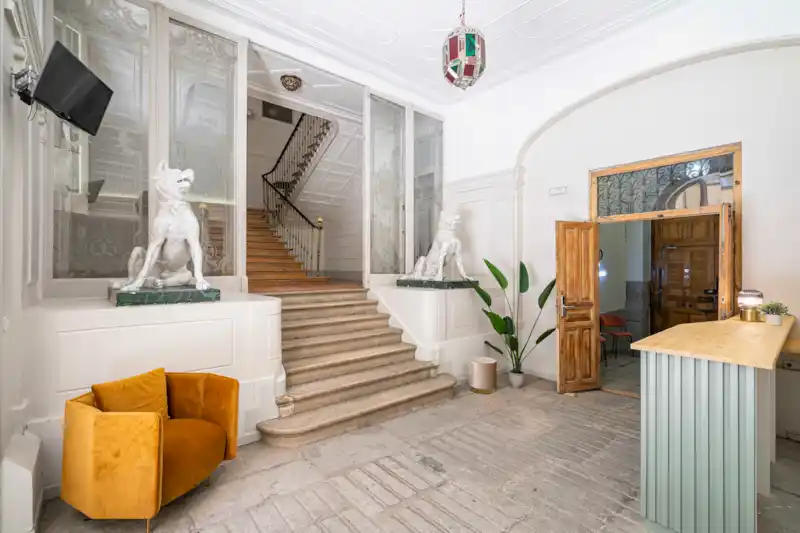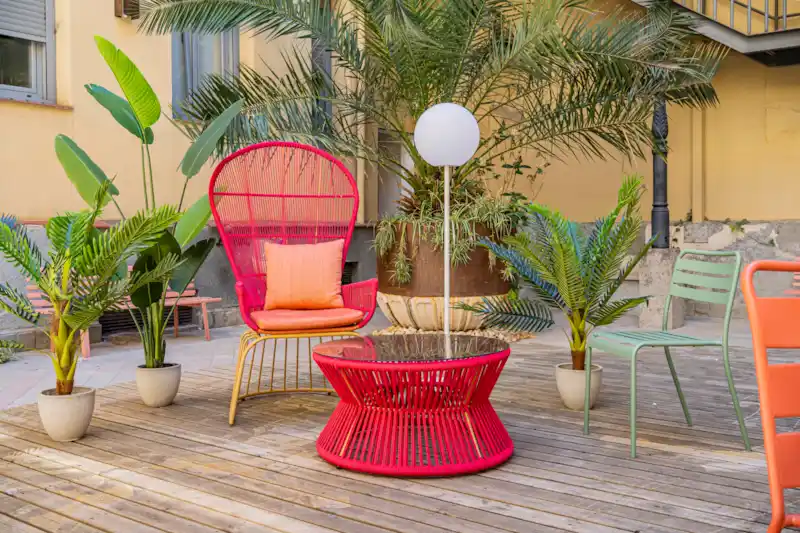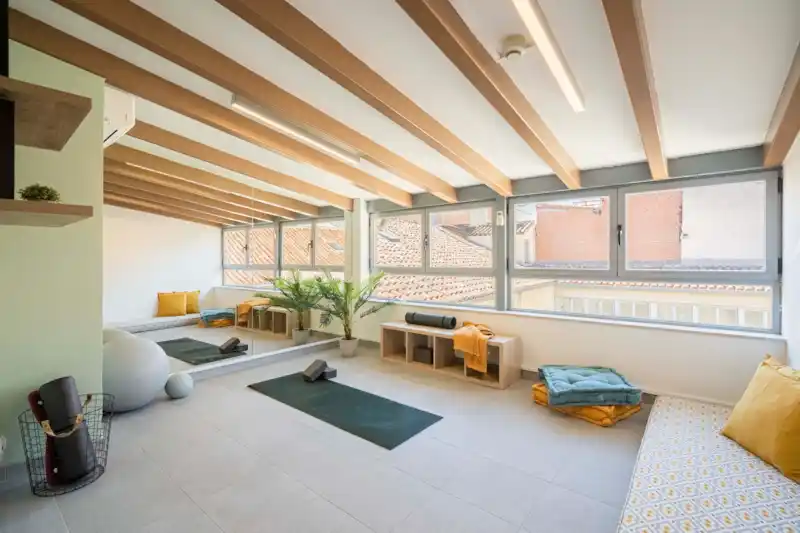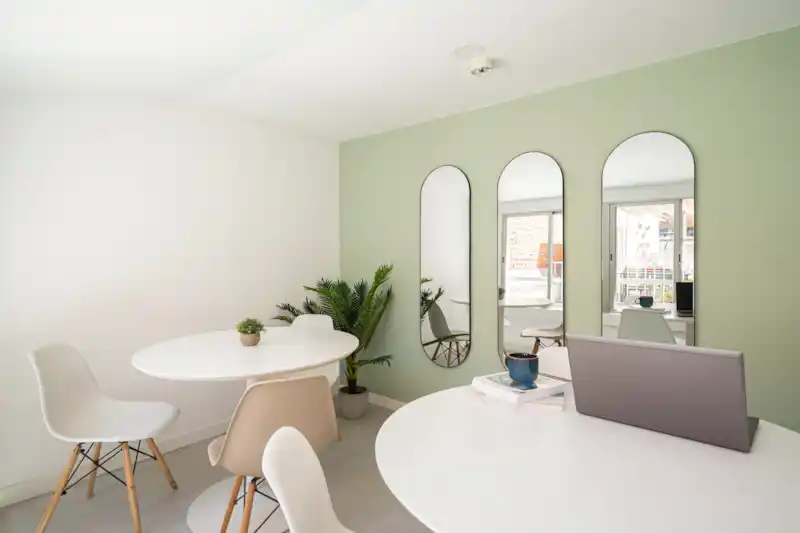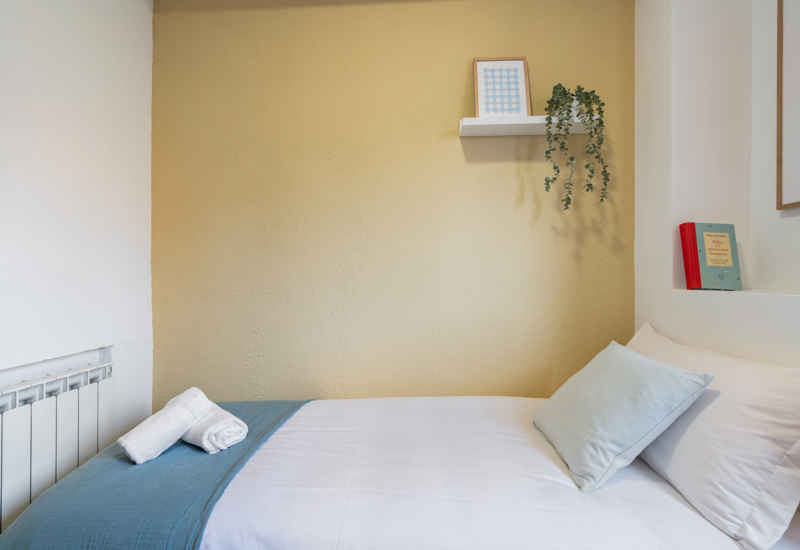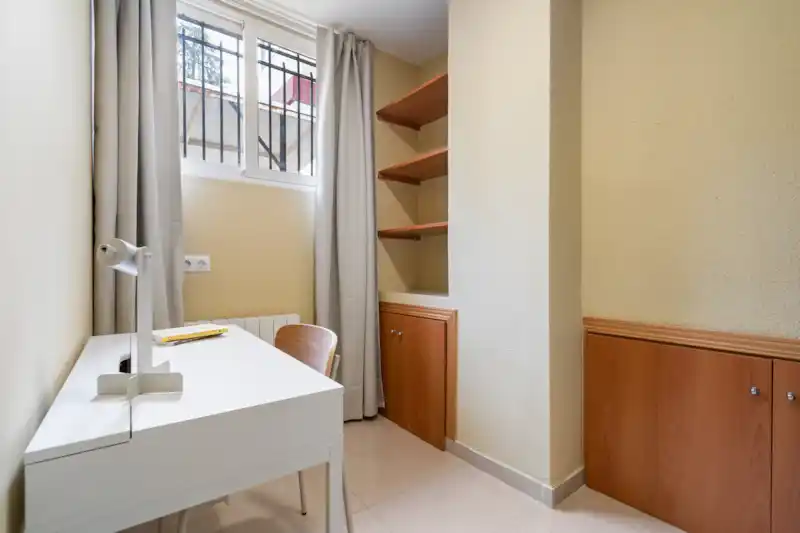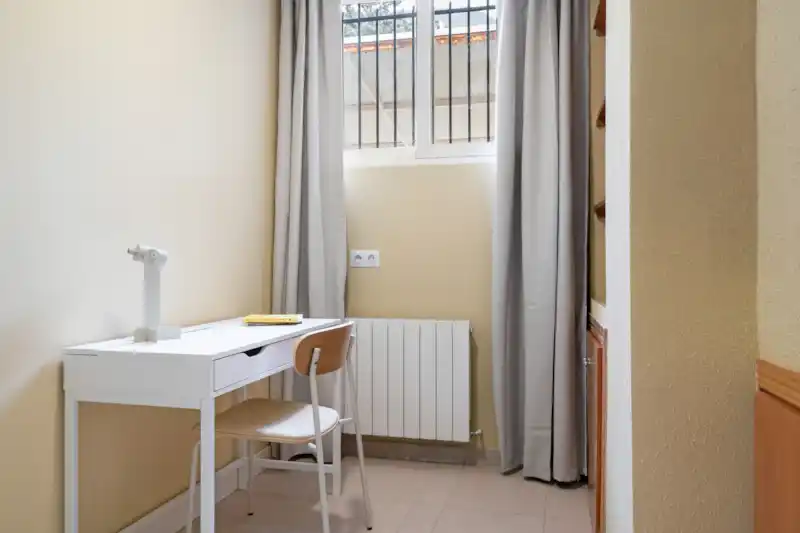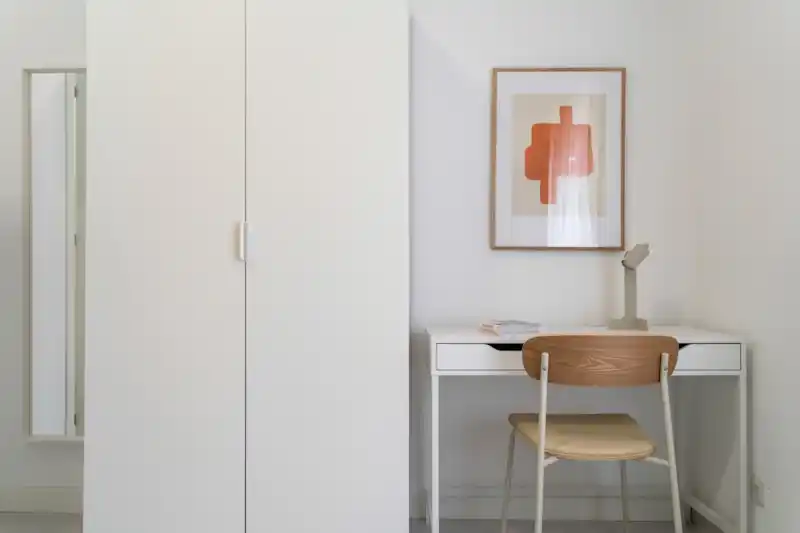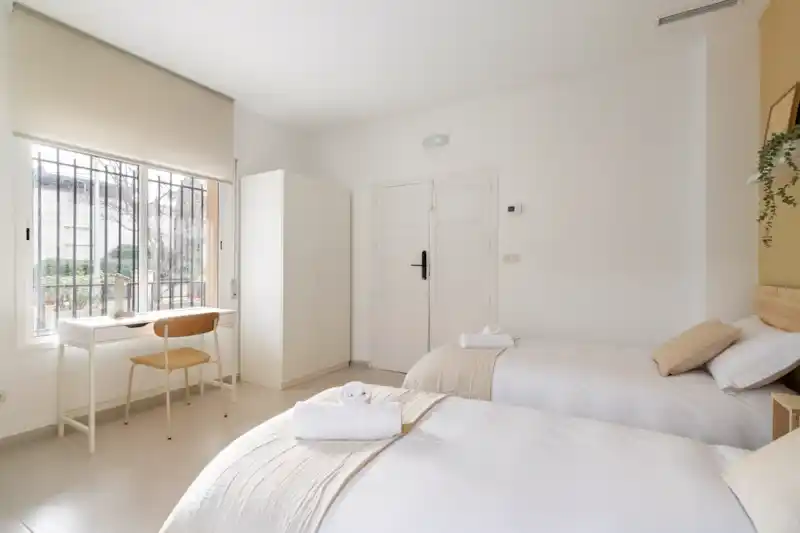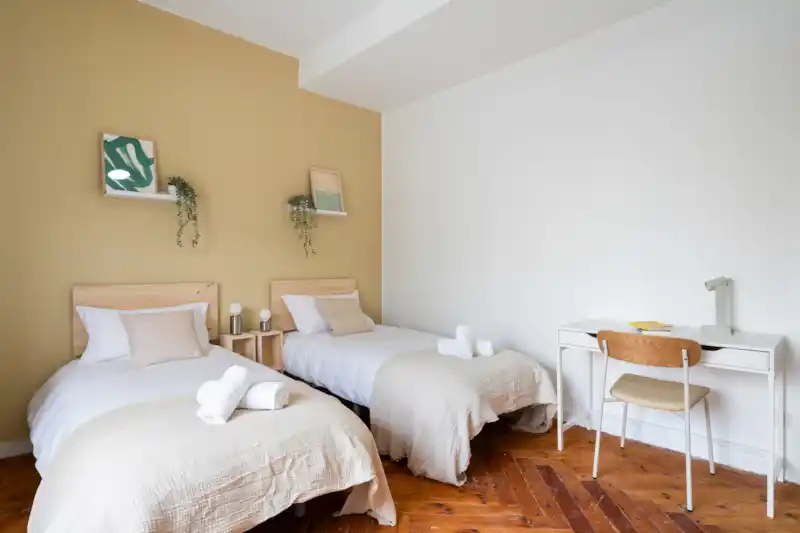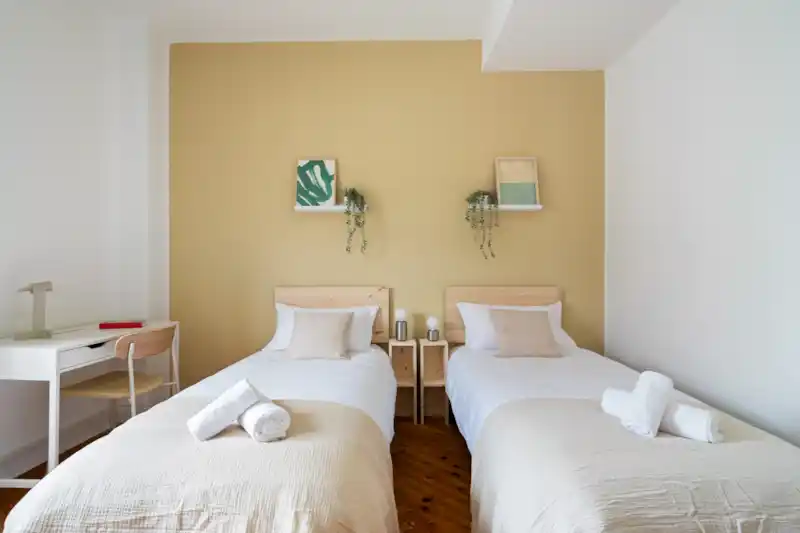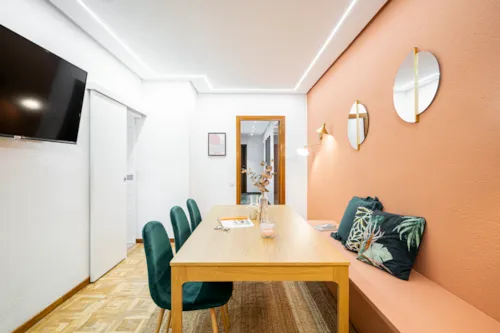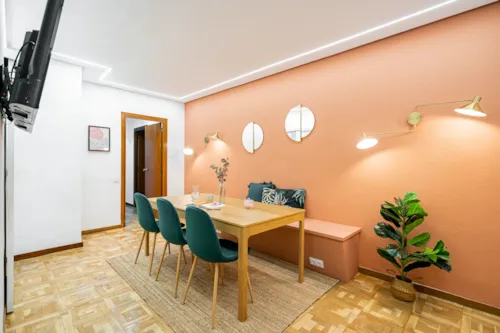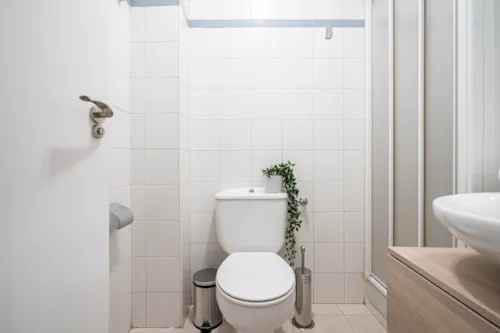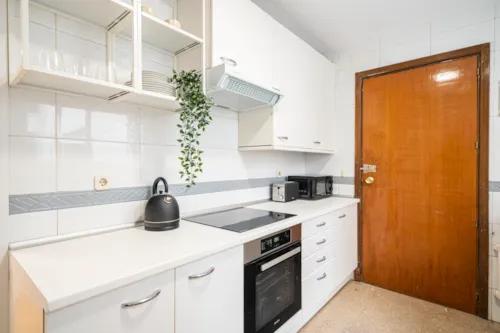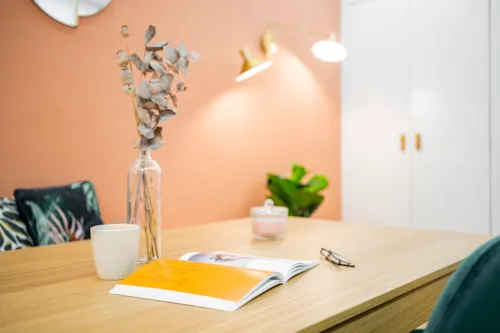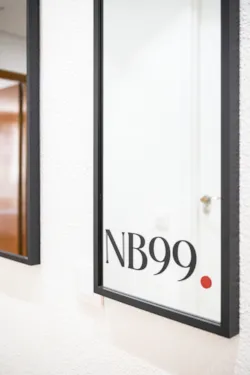
Barrio de las Letras
Barrio de las Letras, Madrid's literary quarter, is located right in the heart of the city. Bordering the area are Calle de la Cruz, Carrera de San Jerónimo, Plaza de las Cortes, Calle del Prado, Calle del León and Calle de Atocha.
It owes its name to the literary activity that took place in the 16th and 17th centuries. Some of the most important Spanish writers of the Golden Century passed through here: Cervantes, Lope de Vega, Quevedo, Tirso de Molina and Góngora. In fact, there are many streets and squares in the district that bear their names.
The map of Barrio de las Letras is made up of narrow streets that lead to quiet areas and stately mansions to those characterised by lower historical buildings and a variety of bars and clubs. Indeed, in the 20th century the process of urban evolution led to a concentration of Madrid's nightlife and movida in this area. But it is also an area intensely dedicated to art and in its surroundings, there are many of the city's museums.
Since 2008, the district has become a priority residential area and pedestrian areas have been extended. Road traffic is very limited on most streets except for residents, public transport or in case of emergency.

We have no availability in this neighborhood
What to see and do
Getting lost in the streets of Barrio de las Letras is the best way to visit the neighbourhood and let yourself be carried away by its atmosphere.
One of the main places in the area is Plaza Santa Ana, a meeting point for the locals and also very busy during the evenings and nights due to the presence of numerous clubs. In this square there are two statues, one dedicated to the playwright Calderón de la Barca and the other to the poet Federico García Lorca. It is also overlooked by the Spanish Theatre, the oldest in Madrid and one of the most important references for performance art in the city.
The other theatres in this area are: Teatro Reina Victoria, decorated with stained glass and mosaics, and the Teatro Monumental, home of the Spanish Radio and Television Orchestra since 1988, renowned for its acoustic quality.
The Casa Museo de Lope de Vega is worth a visit where guided tours are organised and should be booked in advance. It is a typical Castilian period house that retains its main features despite having undergone some transformation over time. Instead, Lope de Vega's remains are kept in the Church of San Sebastián, located on Calle de Atocha, also a must-see for literature lovers.


Within walking distance of this district are two of Madrid's most iconic museums: the Museo Nacional del Prado, one of the most important art galleries in the world, and the Museo Thyssen-Bornemisza, home to Spanish and international painters. Both are located in the street Paseo del Prado not far from Puerta del Sol, another important square in the city.
An important presence in Barrio de las Letras is the Ateneo de Madrid, the most important private cultural institution, founded in 1835 as a place for discussion and free expression of art and ideas. It is part of an architectural complex that has entered the catalogue of Cultural and Historical Heritage of Madrid.
Finally, a bizarre street to walk down is Calle de Álvarez Gato characterised by the presence of concave and convex mirrors that deform figures and distort reality. This street becomes the setting for the annual Max Estrella Night event that is part of La Noche de los Teatros.
Where to eat and drink
Enriching Barrio de las Letras are its bars, restaurants and terraces that make the district a perfect place to sit in the sun and relax while eating or having a drink.
For example, in Plaza Santa Ana there are several venues to eat from breakfast to dinner and beyond. It will be pleasant to spend a break here on the fly or an entire evening and enjoy the hustle and bustle of locals and tourists. Among the most popular venues in the square is the Cerveceria Alemana, which, despite its name, is a typical Madrid brewery. Or Tapa Tapa Santa Ana, which offers traditional tapas alongside more original offerings that include a mix of cuisines and flavours, such as sesame and soy.
If you are looking for the most traditional places in the neighbourhood, you should definitely head for the centuries-old taverns serving the best tapas in Barrio de las Letras. These establishments linked to a bygone era blend in perfectly with the more innovative restaurants and give the neighbourhood its distinctive charm.


Let's see the names of some traditional restaurants: La Taberna Los Gatos, which serves popular recipes, such as the classic patatas bravas or the squid sandwich. La Platería, one of the most famous tapas bars that also offers a terrace overlooking the Paseo del Prado. Taberna La Fragua de Vulcano, a casual eatery offering ham, cheese, and croquettes with typical flavours. Also worth mentioning is Casa Gonzalez, a bar and restaurant resembling an old shop with a counter dedicated to cured meats and cheeses.
They are all also perfect for having a great Spanish-style aperitif!
What recommendations on where to eat paella? Here they are: Taberna el Sur de Huertas, El Caldero, specialising in the cuisine of the Murcia area, El Barril de las Letras, this is a seafood restaurant with an elegant and somewhat retro style.
When night falls there is no shortage of opportunities for live music or DJ sets. Café Central, for example, is famous for jazz evenings, or La Fidula for art music and the Tablao Cardamomo for a drink to the rhythm of flamenco.

Where to go shopping
Shopping in the Las Letras district is very pleasant because the pedestrianised or traffic-restricted streets allow you to stroll around relaxed looking at the shop windows of charming art galleries.
The shops you find in this neighbourhood are mainly decorative and antique, but there is no shortage of vintage options and bookshops. You can find works by great writers, both ancient and modern, because even the businesses are positively influenced by the artistic-literary imprint of this area. Bookshops not to be missed include: Desnivel, a reference for mountain lovers, Crazy Mary, a cosy meeting place for literature lovers, and Libreria Iberoamericana specialising in Hispanics and Latin Americans.
Famous in this district is the Frog Market (Mercado de las Ranas), street stalls every first Saturday of the month. Shops display their products along the streets and events and workshops are also organised on these occasions.
More traditional shops selling clothes, shoes, accessories, jewellery, household items and useful services, such as pharmacies, can also be found in the area. There are also classic markets and supermarkets where you can buy fresh and packaged foodstuffs, wine bars, shops, and shops with various gastronomic offerings.

Some questions?
Have more questions?














